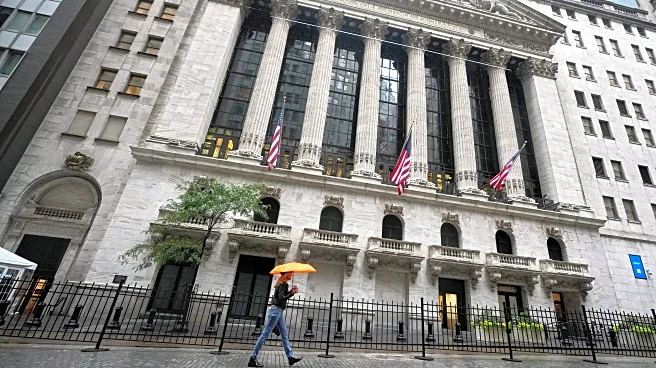What's Happening?
Gold prices have experienced significant volatility, reaching new highs of around $4,250 per ounce as of Monday, October 20, 2025. This surge is driven by a combination of factors, including ongoing U.S.-China
trade tensions, a prolonged U.S. government shutdown, and expectations for an interest rate cut by the Federal Reserve. President Trump's announcement of a potential 100% tariff on Chinese imports initially spiked safe-haven demand for gold, although subsequent clarifications led to some retracement. The shutdown has amplified risk, maintaining gold's appeal as a hedge against geopolitical and policy uncertainty.
Why It's Important?
The volatility in gold prices highlights the market's sensitivity to geopolitical and economic developments. As a traditional safe-haven asset, gold's rising prices reflect investor concerns about the stability of U.S.-China relations and the impact of the government shutdown on economic data and confidence. The Federal Reserve's upcoming meeting, with potential interest rate cuts, further influences gold's attractiveness. These dynamics underscore the interconnectedness of global trade, monetary policy, and commodity markets, affecting investors and policymakers alike.
What's Next?
The Federal Reserve's meeting on October 28-29 will be closely watched for decisions on interest rates, which could further impact gold prices. Additionally, any resolution to the government shutdown or progress in U.S.-China trade negotiations could alter the current risk landscape, potentially stabilizing gold prices. Market participants will be monitoring these developments for signs of reduced uncertainty, which could lead to profit-taking and a cooling of gold's recent surge.
Beyond the Headlines
The current situation with gold prices reflects broader concerns about economic governance and international relations. The interplay between trade policies, government operations, and monetary decisions highlights the complexity of managing economic stability in a globalized world. As these issues evolve, they may prompt discussions on the need for more robust frameworks to address such challenges, potentially influencing future policy directions.












